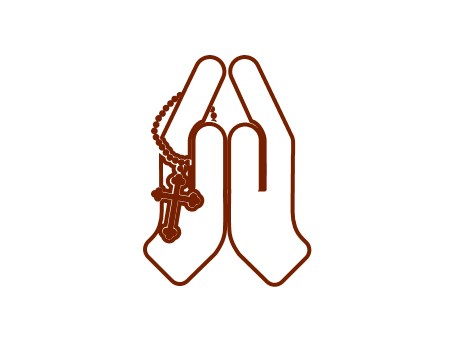Solidarity
Lower Primary
What is Love?

Thu and his wife Linh live in the Quang Tri province, Vietnam. After Linh suffered a stroke, Thu became her primary carer. Photo: Phan Tan Lam/Caritas Australia
Inquiry Question: What is Love?
By the end of this unit, students will be able to explain the idea of love and display different ways they are able to ‘love their neighbour’ (Mark 12:31).
Before you start:
- Watch the Catholic Social Teaching (CST) film, ‘Solidarity’, for your own background and familiarise yourself with Solidarity.
- Download the various resources referenced at the bottom of this page (worksheets, slides etc.). Have weblinks ready to go on your computer/interactive whiteboard.
- Read/watch the stories and videos linked in this learning sequence to determine if they are appropriate for your class.
- Locate any Scriptures and copies of Church texts (hyperlinked within the learning sequence below).
See-Judge-Act-Pray Process
This learning sequence has been created using the ‘See, Judge and Act’ model.
This reflection–action process was first used by a Belgian Catholic priest, Joseph Cardijn (who later became a Cardinal) with Young Christian workers prior to the first World War.
This approach was also recommended in the 1961 encyclical letter written by Pope John XXIII called Mater et Magistra (Mother and Teacher).
Definition
- a firm and persevering commitment to the common good, which reminds us that everything is related
- the act of standing shoulder to shoulder with others
- a way of saying, ‘I’m here with you’.
Student-friendly explanation:
- We are all connected.
- We need to work together and support each other as one human family.
Learning intention
We are learning:
- the meaning of love
- characteristics that display love to others
- how Caritas Australia and their partners display love to others
- what the Church means by ‘love your neighbour’ (Mark 12:31).
- how we can show love to others

SEE
Students participate in a word Scavenger Hunt where they are to find the letters written on a particular colour (e.g. L – O – V – E written on green pieces of paper). Upon returning, they are to unscramble the letters to form the word and share the word with the class. After all words have been shared, using Inside/Outside Circle strategy, students discuss what they believe Love is. Have them consider how they would explain love to someone else. Who do they love? How do they show love to others? Explain that kindness, caring and forgiveness are some characteristics we display to show love to others.
Teacher Note: you may like to add additional words you know your students will know how to spell (e.g. selfless, compassion, patience)
Source: Sermons4Kids
Explain to students that love is shown by the way we treat one another. Jesus teaches us that love is patient and kind. Love is not jealous or boastful. Love is not proud or rude. Love does not demand its own way. Love is not easily angered, and it keeps no record of wrongs. Love rejoices with the truth. Love always protects, always trusts, always hopes. Love never ends. (Amended from 1 Corinthians 13: 4-8)
Breakdown the message by asking students questions like: How is being patient showing love? How can we be kind to someone? What does boastful mean? Explain to students these are characteristics we use to show love. Students identify 4 characteristics of love in their workbooks under the heading Love is … .
Read Ronita’s story and explore the different characteristics of love being displayed by Ronita and by Caritas Australia’s partner, Faithful Companions of Jesus (FCJ). Print a picture of Ronita from the photo storybook to display on a classroom wall and have students decorate flashcards with a characteristic of love on it to be displayed alongside Ronita’s story. Students may like to design an icon or emoji to represent the characteristic.
Play ‘A Kind Voice’. Seat one volunteer with their back facing the group, alternatively blindfold the individual. Another member of the group then says, “Am I your neighbour?” as they try and disguise their voice. The volunteer responds with “yes (insert name of the group member), you are my neighbour.” Provide 3 attempts for the volunteer to guess correctly before repeating with a different volunteer. When they guess correctly, have someone step into their place and play it again. Discuss as a class, the idea of who is our ‘neighbour’ according to Scripture and explain that Ronita is our neighbour, even though she lives in another country called the Philippines.
Source: Jesus Without Language

JUDGE
Explain that Scripture tells us to ‘love your neighbour as yourself’ (Mark 12:31). There are countless examples in the Bible where Jesus teaches us how to love our neighbour.
Display the visual images from the Solidarity Presentation. Each image represents a Bible story. Explain to students how Jesus is helping. At the end of each explanation, have students say, “Jesus showed us how to love one another”.
Amended from: Church of Jesus Christ
Watch the ‘Jesus said Love Everyone’ by Michael R. Hicks video. Teach students instructions that go with the song. Discuss the lyrics and what they mean about Jesus’s love for us. Share ideas of how we can all show love like us.
Jesus said love everyone; (spread arms out wide)
Treat them kindly too. (nod head up and down)
When your heart is filled with love, (put hand over heart)
Others will love you. (hug self)
Source: Church of Jesus Christ

Act
Watch the Kindness Boomerang video.
Create Random Acts of Kindness as a class. Explain to students that we’re going to re-create the video with our own Random Acts of Kindness that we can do here at school. Discuss and plan the ideas as a class.
Record the random acts of kindness and share with the school community to encourage others to do the same. You may like to include the song ‘Jesus said Love Everyone’ by Michael R. Hicks as backing sound on the video.

Pray
Invite students to decorate a heart for someone at school or at home.
Provide them resources to be able to decorate their heart.
As they decorate, play ‘Jesus said Love Everyone’ by Michael R. Hicks song to inspire students.












